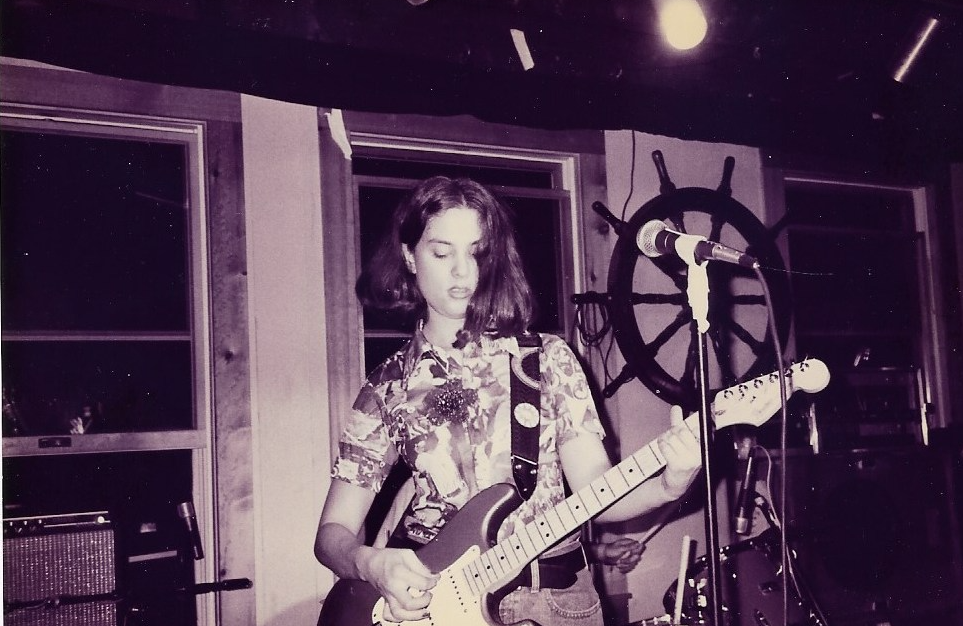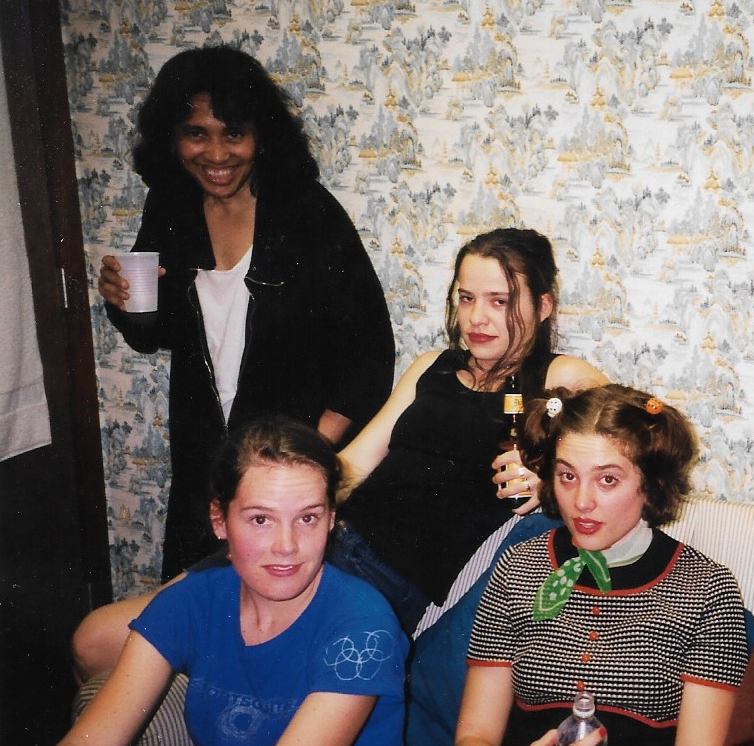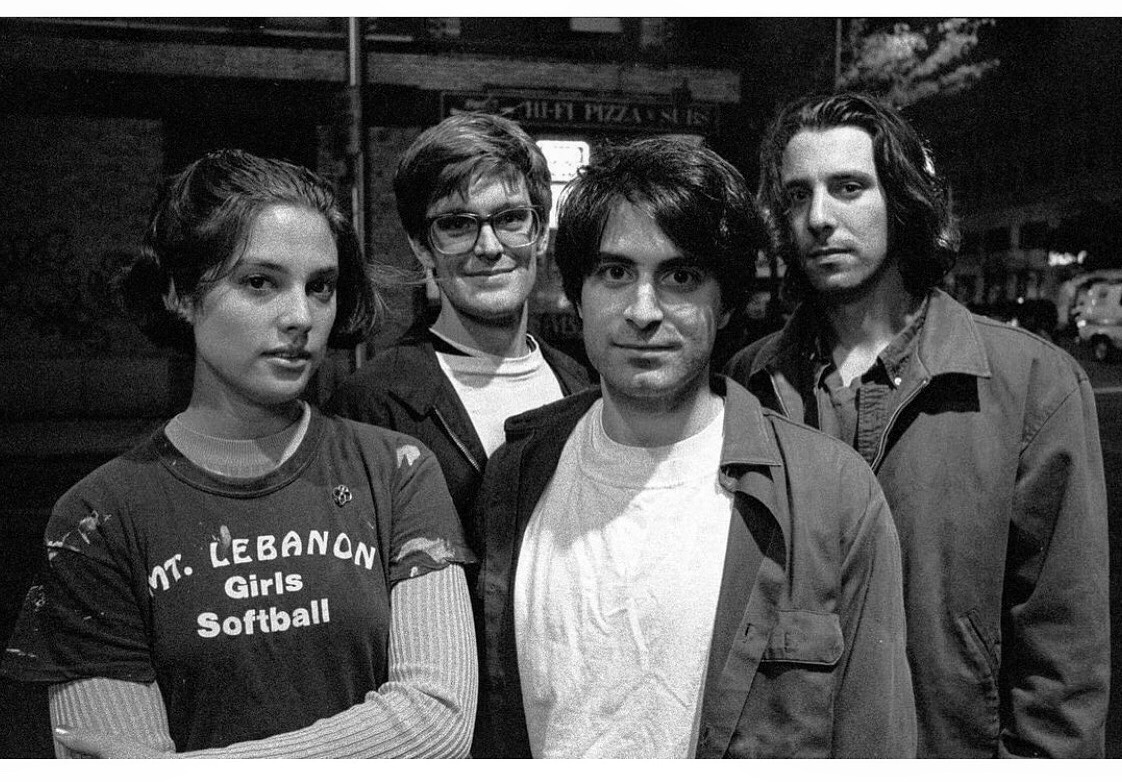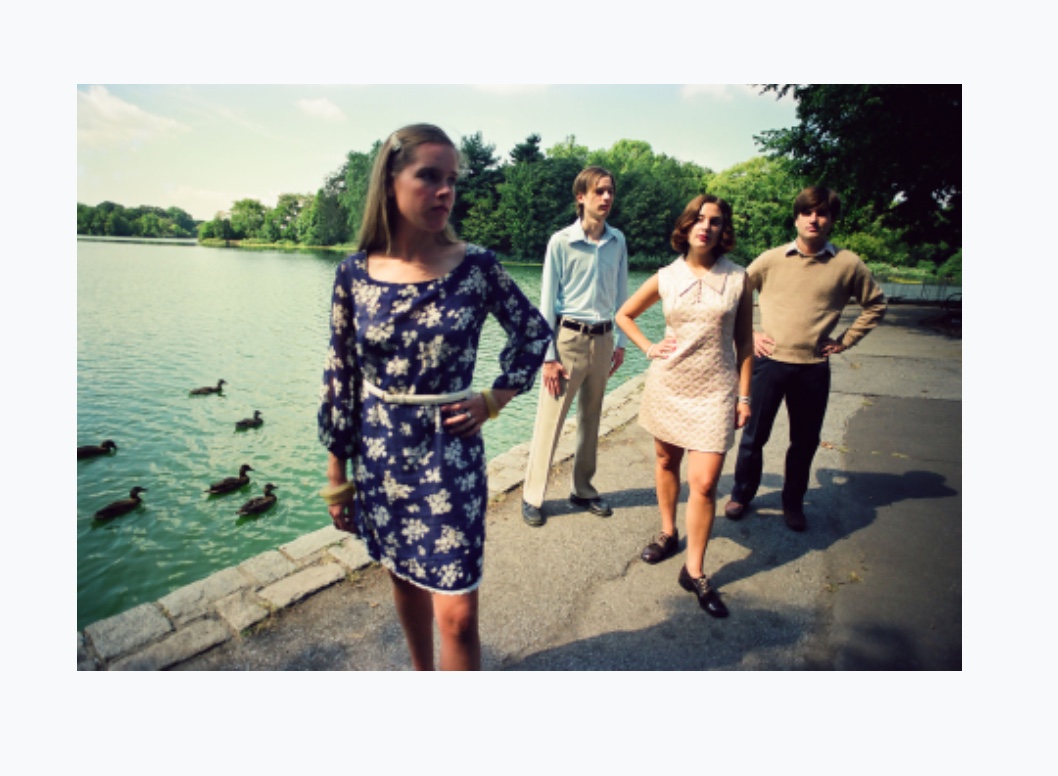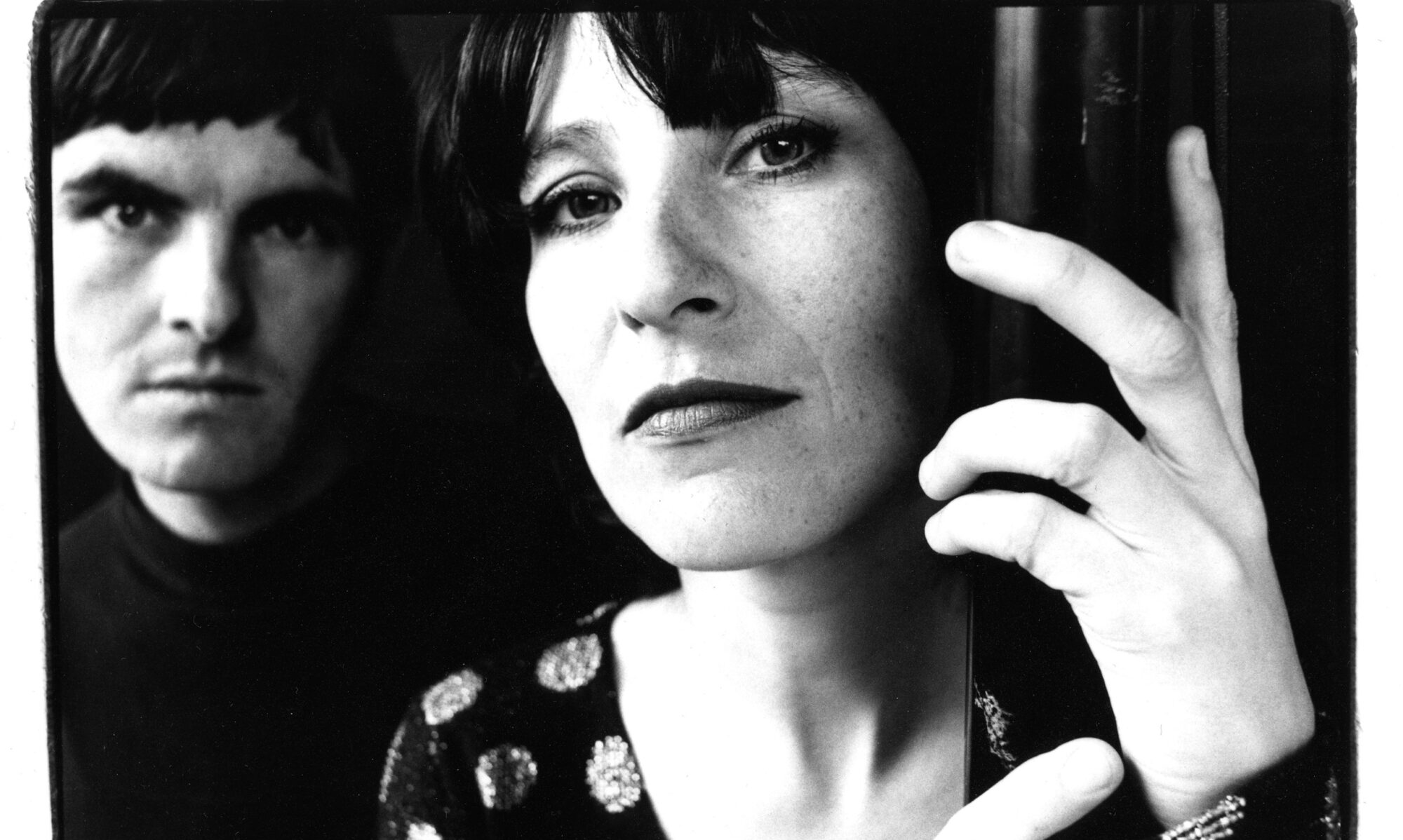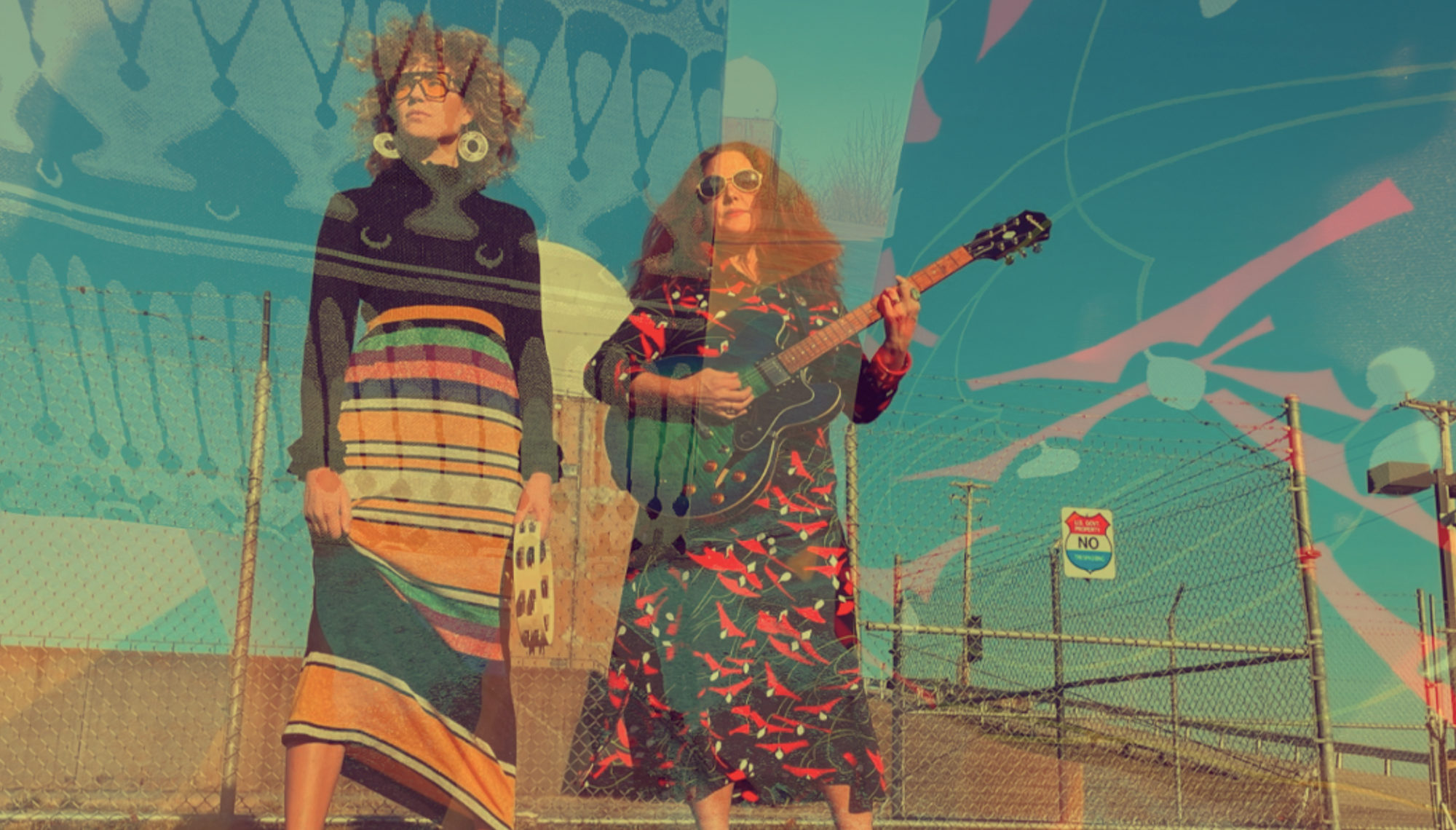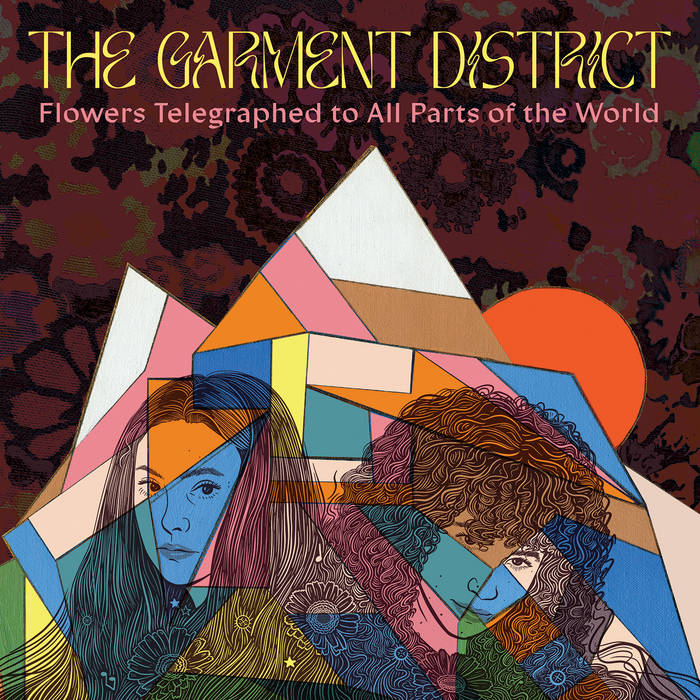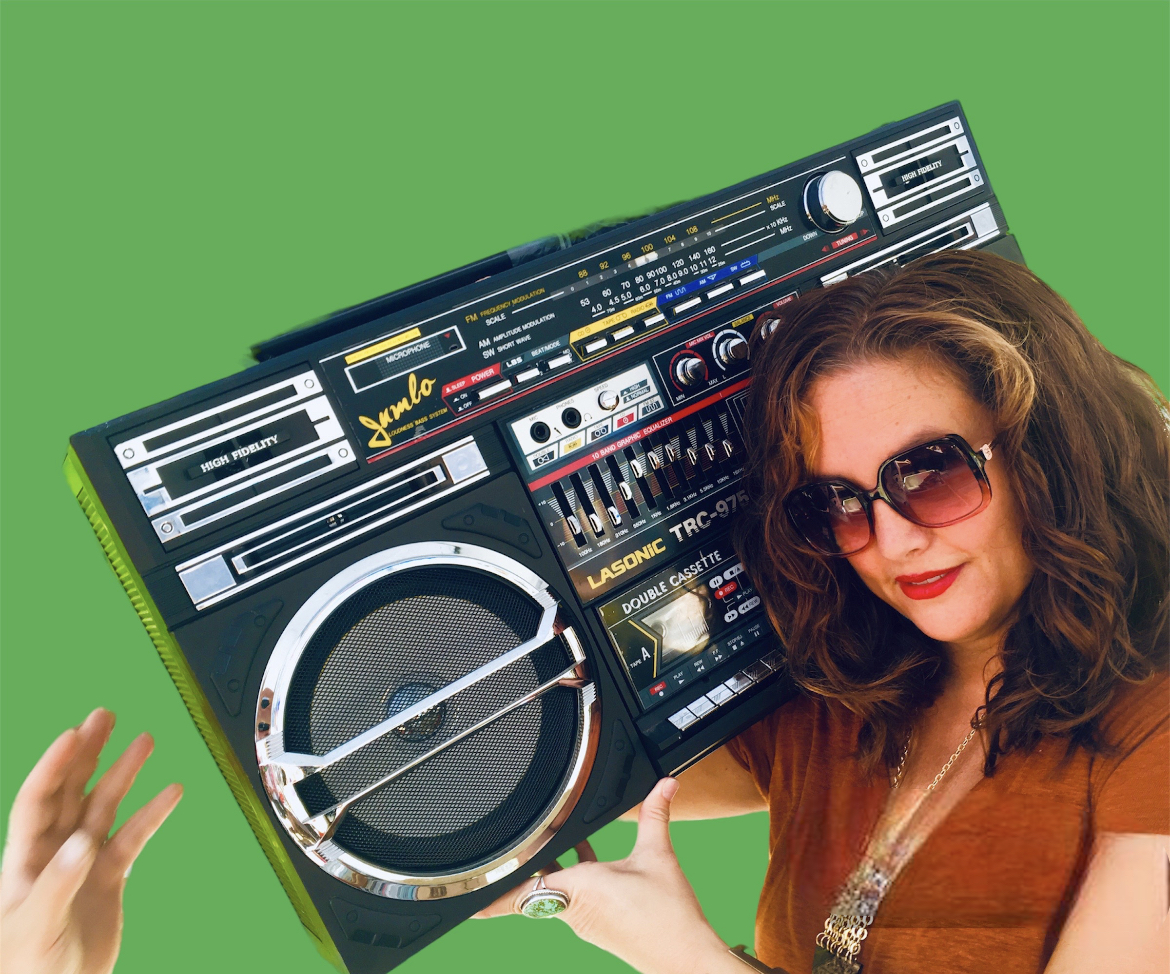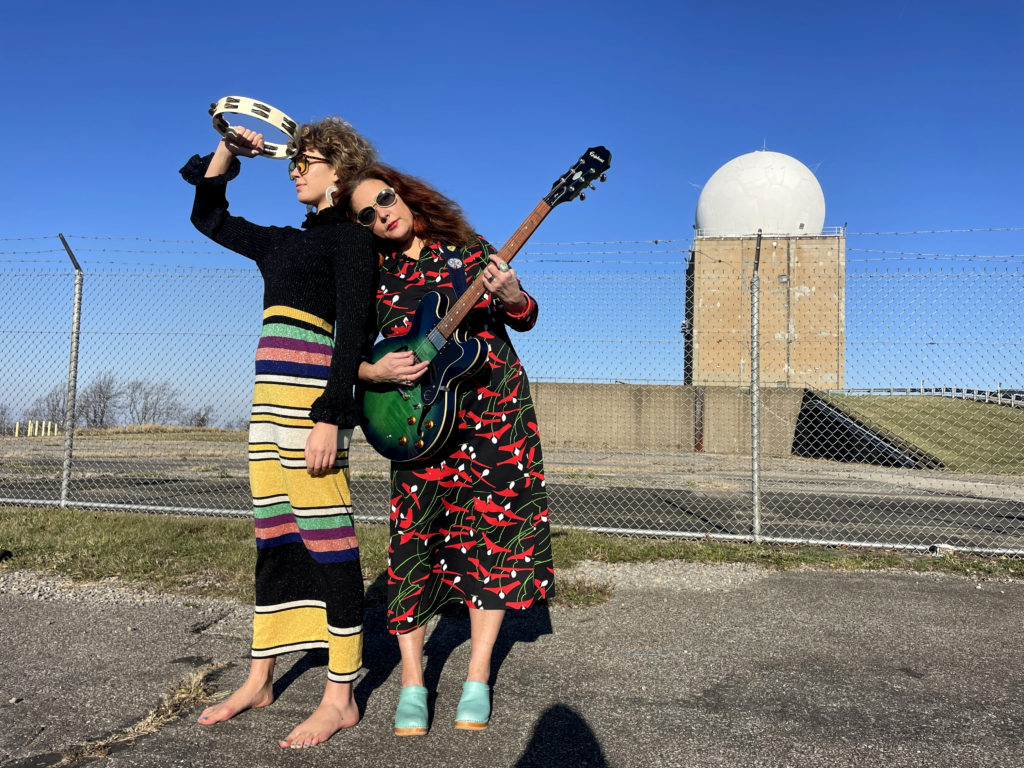
Jennifer Baron in Conversation with Hilarie Sidney
“I’m thrilled to be contributing a song for a compilation on Hilarie’s 6612 Tapes label with proceeds supporting Justice Democrats,” says Jennifer Baron (she/her), adding that the band she cofounded in the 1990s, The Ladybug Transistor, is excited to announce news soon, including a tour in 2024 with West Coast (U.S.) dates. In addition to exec-producing the compilation, Jennifer is the force (composer, arranger, and multi-instrumentalist) behind The Garment District, a Pittsburgh-based project she works on with her cousin, which released Flowers Telegraphed to All Parts of the World last fall on HHBTM records.
This is the second part of a two-part chat between longtime friends Jennifer and Hilarie Sidney (the High Water Marks, the Apples in Stereo), who talk about everything from skinnydipping in Sweden and living in the moment to the comforts of recording at home with friends and family. Jennifer was having her morning coffee in Pittsburgh and Hilarie was at home in Grøa, Norway. (Images courtesy of Jennifer) (Read part one)
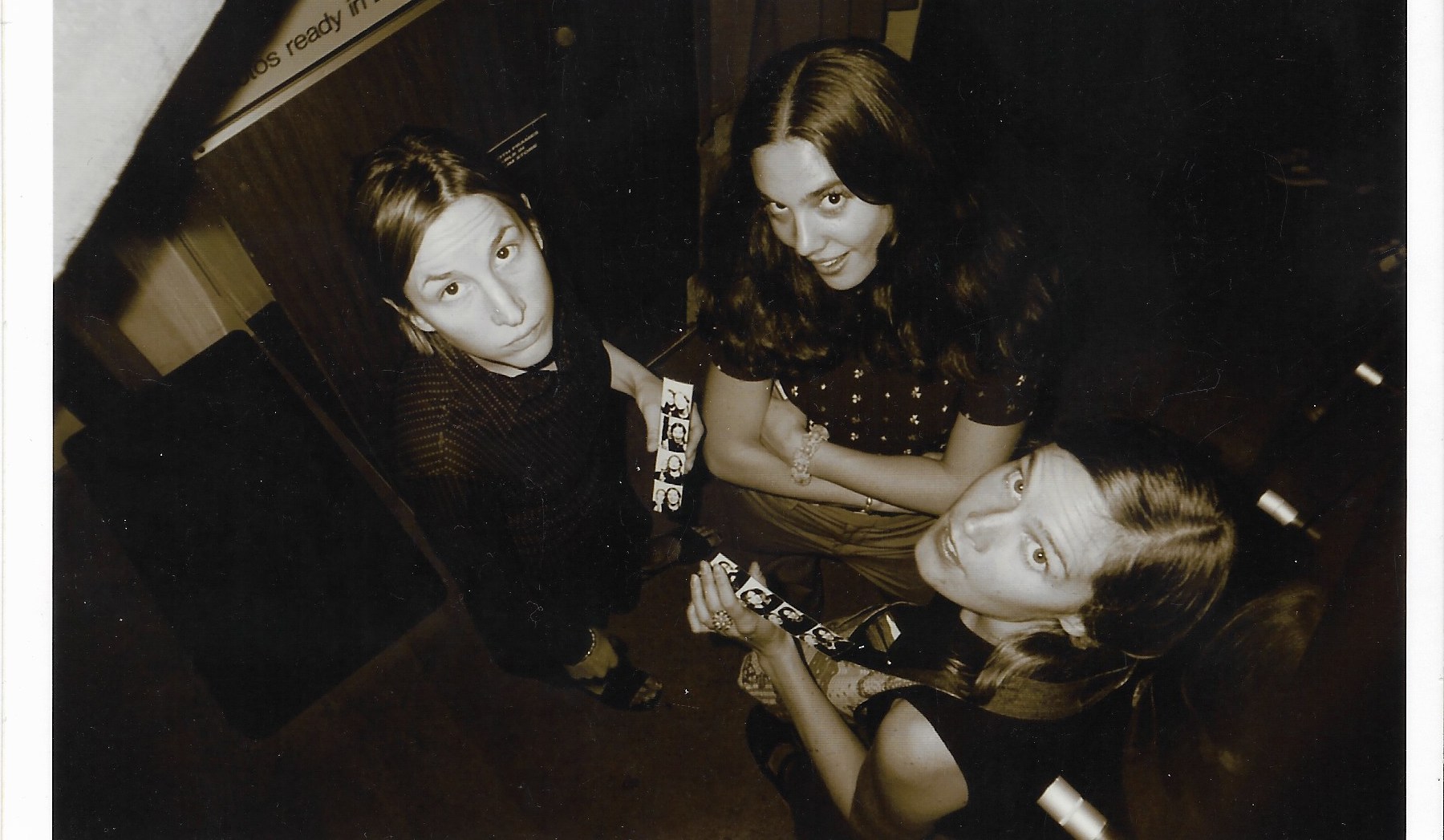
Hilarie: What bands have you been in then and now?
Jennifer: Past: Saturnine, Frock, The New Alcindors
Now: The Garment District, The Ladybug Transistor
Hilarie: Was music a big part of your upbringing?
Jennifer: You already know my brother Jeff because we play in Ladybug Transistor together. When we were growing up, we would make up our own radio shows. We would record on Maxell cassettes, play the part of DJs, act out commercials and select music from our parents’ vinyl collection. Our household was filled with records, especially the Beach Boys and Beatles. We would just lie around and stare at record covers. Those records were some of our favorite toys. Donovan, Leonard Cohen, Neil Young, Bob Dylan. We weren’t raised with religion, so I always joke that Leonard Cohen, Bob Dylan, Neil Young was our cultural trinity growing up. My first concert was Peter, Paul and Mary. We started going to concerts together early as a family: Richard Thompson, Leonard Cohen, Neil Young, Bruce Springsteen, U2, the Replacements. And then as teens were fortunate to have seen so many incredible bands (RIP the Syria Mosque!), like the Smiths, the Cure, R.E.M., New Order, the Three O’Clock, Hüsker Dü, Modern English, the Ramones, the Kinks, Camper Van Beethoven—that was absolutely pivotal for me. More recently as a family we saw Bert Jansch in a church, not long before he passed away. Music was always on around the house and in the car. We had 45s and the Fisher Price turntable so music has been a constant. My mom grew up with Bonnie McLean’s (RIP) half-sister in Philadelphia; she was one of the most amazing Fillmore poster designers. She made some of the most beautiful posters from that era. She would mail them to my mom and her friends at Penn State to decorate their dorm room and we had them framed on our walls growing up. Music (and album covers) created a place of joy and comfort for us and that created the essential foundation for me.
Jeff was always playing in bands (in what is now Pittsburgh show legend, his high school band opened for Nirvana very early on, at The Sonic Temple, which was a short-lived all ages venue inside a Masonic Temple), but then I was like, I want to play guitar too! Did you ever have that feeling where you’re like, I’m not just a music fan and you’re learning by listening and going to shows, constantly paying attention. That’s a way of learning music too. I took piano from a woman down the street when I was a child. When I was at Mount Holyoke College, I took lessons from a guy in Amherst here and there, which was kind of awkward because I had my binder of songs I wanted to learn, and he wanted me to strum along to his songs. So I really learned to play by joining a band. I first started playing guitar in Saturnine in Brooklyn. When we were forming Ladybug, Sportsguitar invited us to go on tour with them in Switzerland around 1995-1996, so that’s when I also started playing bass.
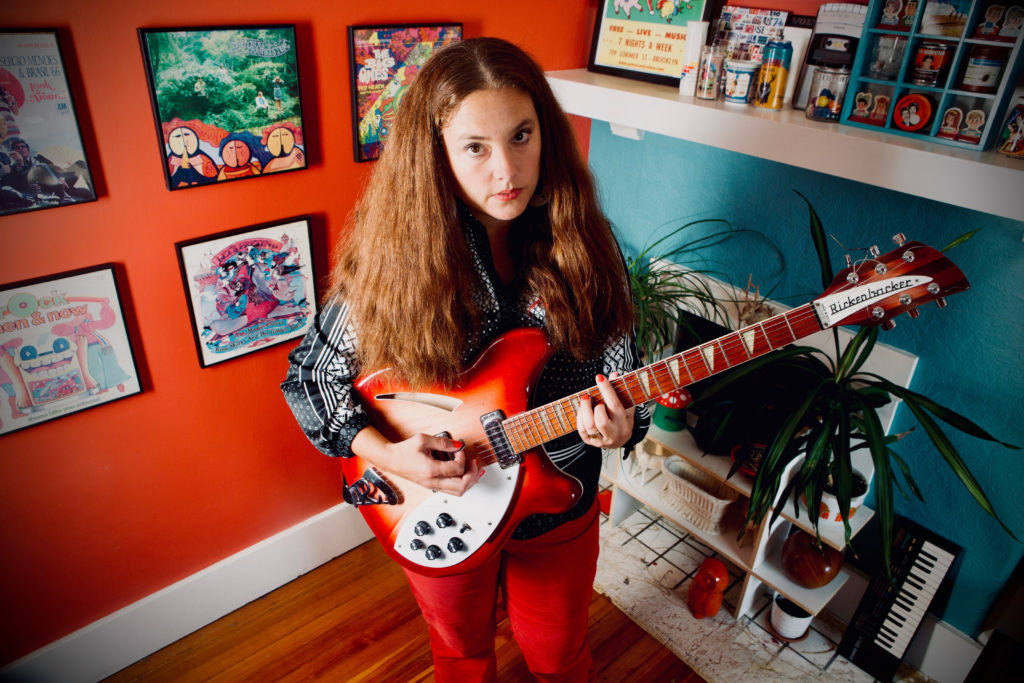
Hilarie: That’s how you do it. It’s like, I want to be part of this. And maybe I can’t do this, but I will do this because I want to.
Jennifer: You learn from being with others and from listening and doing. It teaches you to really listen and learn to play with other people.
Hilarie: Tell us what you’ve been up to in Pittsburgh.
Jennifer: Before creating music at The Garment District, I was focusing my creative energies in other realms. First, I worked as education director at the Mattress Factory, an incredible contemporary art museum here, and created educational programming, including for our James Turrell retrospective exhibition. That was a huge draw for me to take the job when I moved here and worked with artists from Cuba at a time where there was political turmoil with Bush as far as Cuban artists not being able to come to the U.S. So there was a long-distance collaboration, long before the times of lockdown. In that position, I worked with incredible contemporary living artists and created educational and public programs and materials. So, it was very much a creative job. I had worked in museums in New York, including the Brooklyn Museum, and also worked here at SLB Radio Productions, which produces a public radio show and radio-based programs for kids and families based out of the Children’s Museum of Pittsburgh. I was also was one of the longtime co-organizers of Handmade Arcade in Pittsburgh, the city’s first independent craft fair. I had cofounded an online craft business with Christine Lee and Danielle Fee when I lived in New York, just at the beginning of websites. We were vendors the first Renegade Craft fairs at McCarren Park in Brooklyn and Wicker Park in Chicago. After moving back to Pittsburgh, I remember seeing a flyer announcing Handmade Arcade applications. It was the first event, with like 30 vendors and 1,000 attendees in a small gallery space. I became one of the organizers and a longtime vendor and then the marketing director. We ran that for 15 years and it grew to 200 vendors and 10,000 attendees.
So, I was working creatively in those realms and also I co-published the Pittsburgh Signs Project photography book. We received a grant from the Sprout Fund, which we had applied for. It was a competitive process, and it was during the city of Pittsburgh’s 250th anniversary. There were projects that were funded that involved the community and this was the early days of crowdsourcing. It’s a 200-page color book, so we had 250 signs from all over Western Pennsylvania, not just from Pittsburgh and photographers were children all the way up to people in their 80s. Professionals, hobbyists, amateurs, designers, a whole range. Being on tour in the ’90s, I was always one of the ones who had a camera, and I was always taking photos and I’d get teased. I would always say stop the van, stop the van, let’s jump out. I was taking photos of these cool neon signs mainly out west. A lot of them are still there out west because the weather’s so much drier. Our book had a limited boutique run through Carnegie Mellon University Press and sold out quickly, so I’ve always daydreamed about doing a second printing because most of the things in the book are either destroyed, demolished, ended up in dumpsters in gentrified neighborhoods, etc. and it’s a visual recording of the built environment of Pittsburgh. It’s available online and in some bookstores still. We created an exhibition, posters and postcards and it was great to have people submit their images to us from all over Western PA and to curate that book. It was two couples working together and we all lived near each other. So it was kind of like a band but for a book.
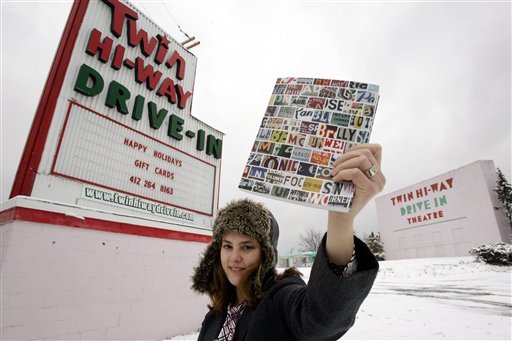
Hilarie: Tell us about the origins of the Garment District.
Jennifer: We were talking about how starting a new project can happen organically. While I was working on the PSP book, I started getting back into writing music. You know, you can’t not do it. I started recording demos at home using our digital Boss 8-track with my laptop and phone. I have a lot of vintage instruments, including a Hammond M3 organ we got for $40 at Goodwill. One of the keys is still chipped, which is frustrating. One night I went to see this amazing band Wet Hair … at the time Shawn Reed lived in Iowa City and had run an experimental/noise label before that (Raccoo-oo-oon). He’s also an incredible printmaker and visual artist. When you go see a band you’ve never heard of and you’re inspired and excited, I need that in my life. It doesn’t happen as often now because of social media and finding out about things too much before you experience them. So I saw Wet Hair and was blown away by the merch table: all handmade silk-screens, collages, cassettes, 45s. I struck up a friendship with Shawn, who was running Night People (label). I sent him some of my Garment District demos and he wrote back in the middle of the night asking, “do you want to do a cassette?” And I was like, “of course!” It just started taking off organically. There was the motivation and there was an investment where I was like, OK, now this is real.
I was also starting to play live with friends in Pittsburgh. My cousin Lucy Blehar was in high school at the time, and I’d always go to see her musicals. I felt that her voice would be a great addition to the music I was writing. I was always in theater company growing up. I don’t sing, but I write all the music and the lyrics. We started recording with my friend Kevin Smith in his attic studio, which led to the cassette Melody Elder on Night People. Then Shawn asked me if I wanted to do a vinyl release. He didn’t do full-length vinyl that often, but my next album, If You Take Your Magic Slow, also came out on Night People. I really thank Shawn, and felt so encouraged and supported, that brought my music into this whole scene of more contemporary underground stuff in the world of the releases he was doing. Check out Wet Hair, they remind me of Spacemen 3 meets New Order combined, plus their own sound. He loves a lot of the same bands we love from Australia and New Zealand and has also done some reissues. So I continued the concept I had for The Garment District and played a few shows with some women in Pittsburgh. We did a Nuggets Night ’60s covers. If we lived in the same city, I’d be like, “Hilarie has to be our drummer.”
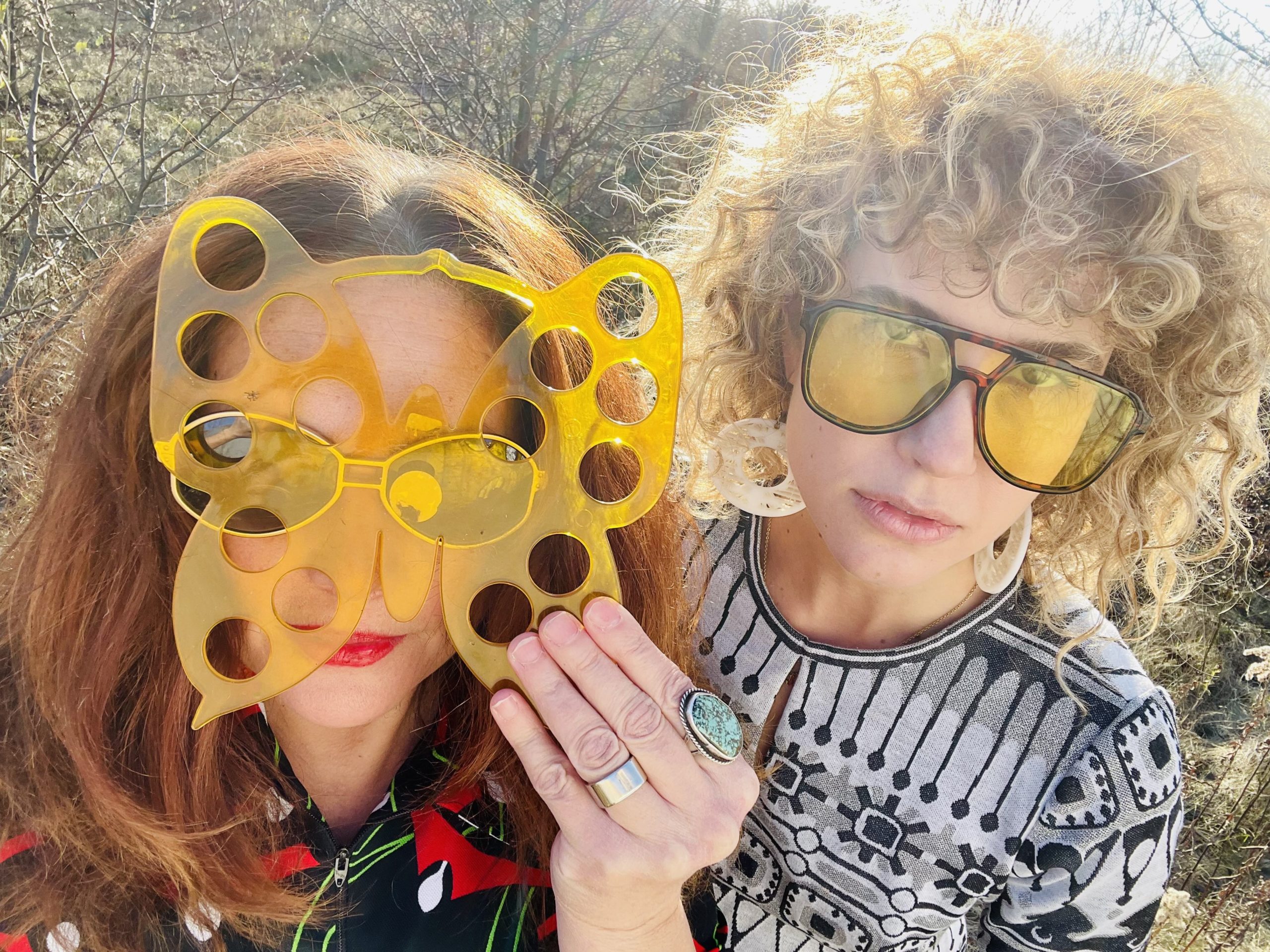
Hilarie: I would love that.
Jennifer: I always wanted to make music with more women and that just was part of that as well.
Hilarie: I didn’t know that and I don’t think I knew that that first album is on cassette.
Jennifer: Yes, my first Garment District release Melody Elder came out on cassette and I always daydreamed about it coming out on vinyl. I love recording in houses like Ladybug has always done with Marlborough Farms. That was my beginning in music. I love recording in home environments and taking time and just that whole vibe. And Melody Elder is named after my favorite childhood babysitter.
Hilarie: That’s her actual name? How cool is that?
Jennifer: If I have a side project, I want to name it that. I don’t even know where she lives now. But like being aGeneration X latch-key kid, typical, we had tons of babysitters and we loved them.
Hilarie: Me too. We kind of raised ourselves but we had babysitters, and our parents went out. My parents were really into partying, so I was left to my own devices quite a bit.
Jennifer: There were a lot of parties. There were Steak-umms for dinner.
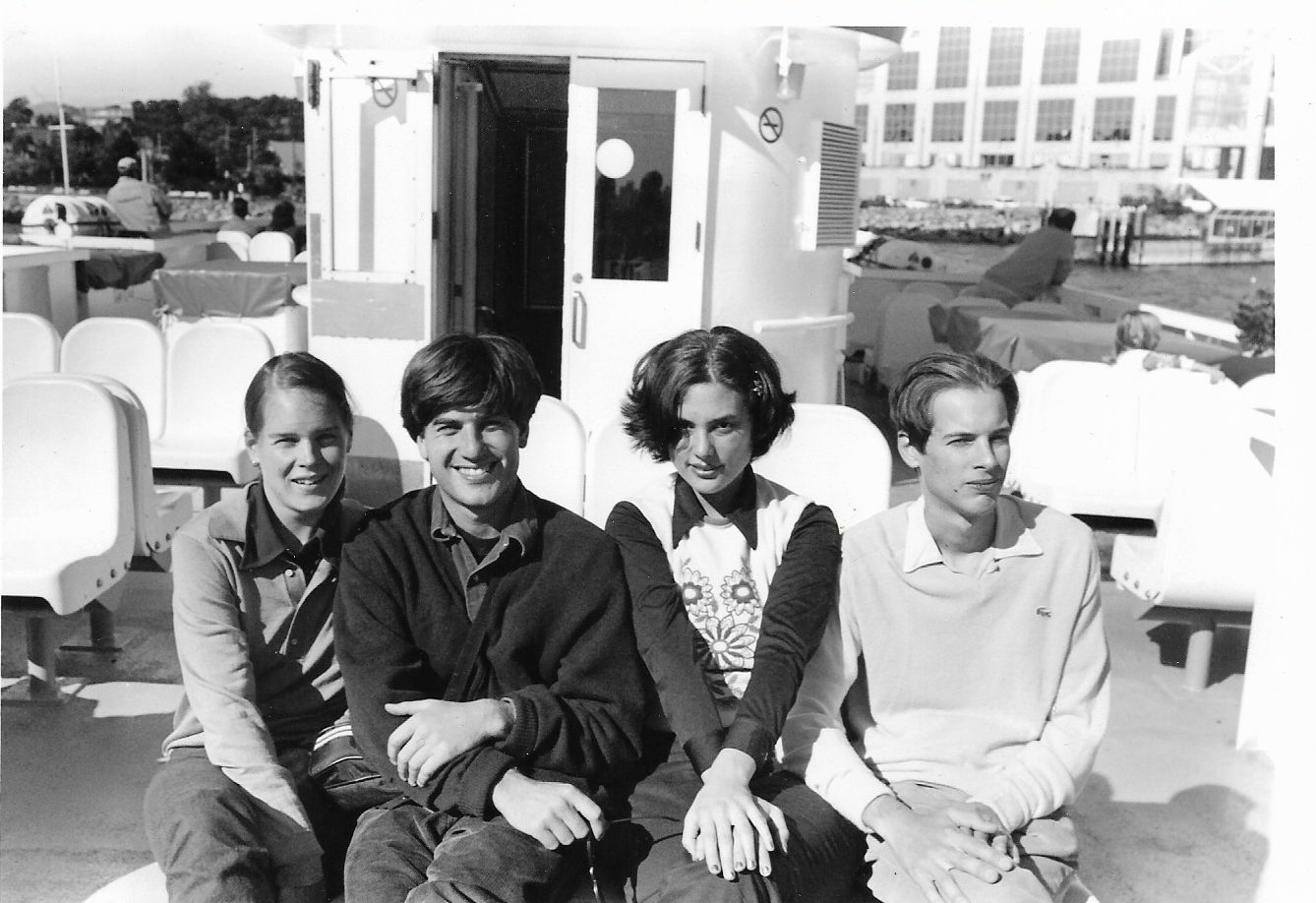
Hilarie: How was the Ladybug reunion last fall?
Jennifer: I picked up Derek (Almstead) in Bedford, PA and we all met up in advance, coming from four different states, in Brooklyn to rehearse at Marlborough Farms, where several of us used to live. It was incredibly special to spend that focused quality time in the house and the neighborhood for about one week before the tour. The first show was in Brooklyn, which was fantastic—it was like a wedding reception with so many old and new friends and people I’d been connecting with for the Garment District and old-school Ladybug fans. It was just amazing to see everyone in one place. I love that venue Public Records in Brooklyn, which is close to our old house. The tour was a dreamy magical whirlwind on a lot of different levels, and for me, I felt instantly back in the on tour mode the second I jumped in the van. We have a lot going on with our live sets, with instrument switches, and being in Norway last July helped prepare us. I can’t wait to do it again! It all clicked back into place and it went really well, especially the show at Public Records in New York and the Andy Warhol Museum in Pittsburgh and being back at Schubas in Chicago. And Kalamazoo, the Bells Brewery, they have this massive space, a huge outdoor garden, a home brewing market and beautiful venue. The sound system was probably one of the best, most professional sound systems we’ve ever played in. Wow, this sounds the sound person with such a sweetheart. The way they treated the band, it felt like being in Europe. I highly recommend that venue.
Hilarie: Who is the biggest comedian in Ladybug?
Jennifer: Really, all of us in our own individual ways. A regular traveling comedy troupe in the van. Party of 6—audience of 6. If pressured to select one, I would probably say my brother Jeff.
Hilarie: Who is the coolest in a crisis?
Jennifer: Gary. However, our forever drummer San met both criteria, cool in a crisis, plus a hilarious and biting and sharp wit. Rest in power forever to the best drummer ever and an incredible human.
Hilarie: If Ladybug Transistor had a theme song, what would it be?
Non Ladybug song: “Joy of a Toy Continued,” Kevin Ayers
“Jackson,” Lee Hazlewood & Nancy Sinatra
Ladybug: “The Great British Spring”
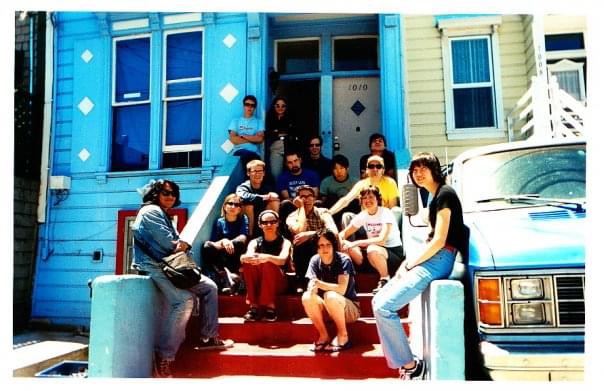
Hilarie: Do you have any funny/odd tour stories?
Jennifer: When Ladybug Transistor was on tour in Spain (Barcelona), it was like a typical Spanish night. We played the show, and you have dinner at midnight and we were sitting outside with Unai, he was our amazing booking agent and tour manager and also drove our van. Mike Galinsky has a documentary film about him, Radiation. I love Spain, it was one of my favorite places to tour. Barcelona is probably my favorite city I’ve been to. And every place you play is such a different geography, different architecture, just so much to do there and we had an incredible time in Barcelona like we climbed to the top of Sagrada Familia, went to the beach; it was just fantastic. We went to the Alhambra, southern Spain, northern Spain. So, we’re in Barcelona, having dinner after the show at this huge round table, all sitting together. The band, other bands, promoter, it was a big group. In the center of the table Jeff and Sasha had their passports, cards and money in a cross-body bag. It was late. Well, someone grabbed their bag, just reached right through all the people around the table, snatched it, and ran off into the night. Everyone started running after this person screaming. My brother Jeff ended up barefoot, I don’t know if he was wearing sandals or flipflops. Everyone was yelling after the person, and they dropped the pack somewhere in the middle of the street.
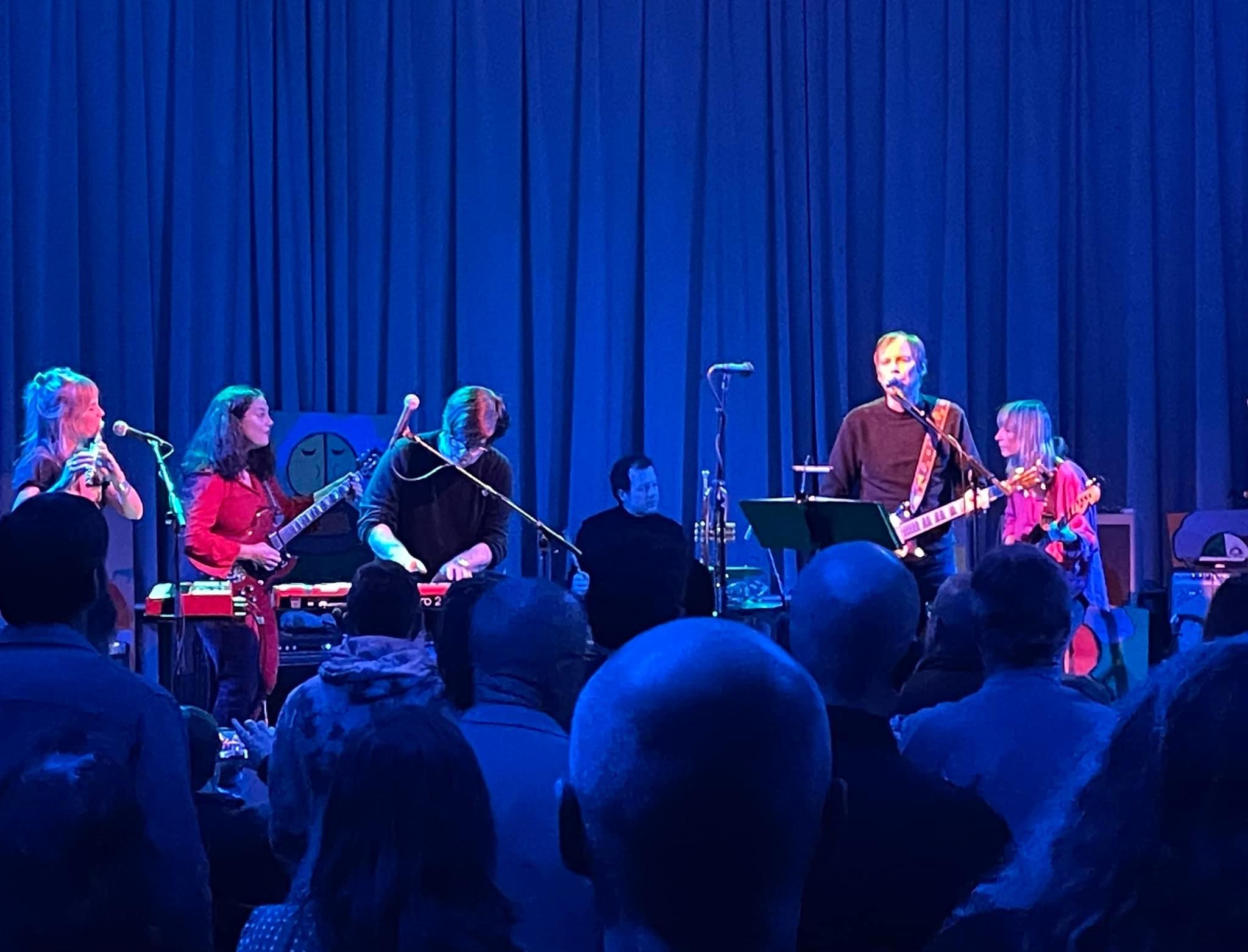
Another logistical craziness story was around the time of The Albemarle Sound tour. We were doing a U.S. tour with Of Montreal when we were also playing the Bowlie Weekender in England, Belle and Sebastian invited us to play, which is which is hands-down one of my favorite experiences ever performing live. This is the day of message boards and pre social media, so it was just so incredible to arrive there. When you’re seeing people, you’re seeing them for the first time. It’s so direct. Yeah, you just arrived, and you experience everything firsthand as it’s happening, which is it’s hard to explain to people who don’t have that and why that’s so important.
So, we already knew we were doing like a monthlong tour with Of Montreal, but we were then invited to do the Bowlie and this was in April 1999. At that point in the tour, we were playing in Norman (OK), so we had to figure out the logistics. So basically, we’re on the tour, but we then had to fly to London and take the train to Camber Sands, to play Bowlie. So Of Montreal agreed to drive our van for us with all of our stuff. We played the show in Norman and then Anne Cunningham and Ron, the amazing original guitar player for The Flaming Lips, had some all-night party BBQ. I love his guitar playing. You probably went to one of those parties or stayed in those big old houses near Oklahoma City. We played that show, stayed up all night, drove the van to the Dallas airport, and left handwritten notes for Of Montreal. I don’t even know if we had cell phones. Everything was like you made a plan and you stuck to it. It wasn’t like you text everyone “I’m almost there. I’m parking. I’m here.” You just made a plan, wrote notes. We made an extra set of keys for them. We flew to London mid-tour and wanted to stay for the festival, so we were gone for a couple of days, and had to miss a few U.S. shows. And then we flew back to rejoin them in San Diego. But it was such an amazing experience, showing up at Bowlie, everyone waiting in line. Meeting these bands, some of them for the first time. You might not even have any idea of who they are. It was such an incredible time being able to play on the same night with Belle and Sebastian. We were so grateful to that Of Montreal was willing to do that.
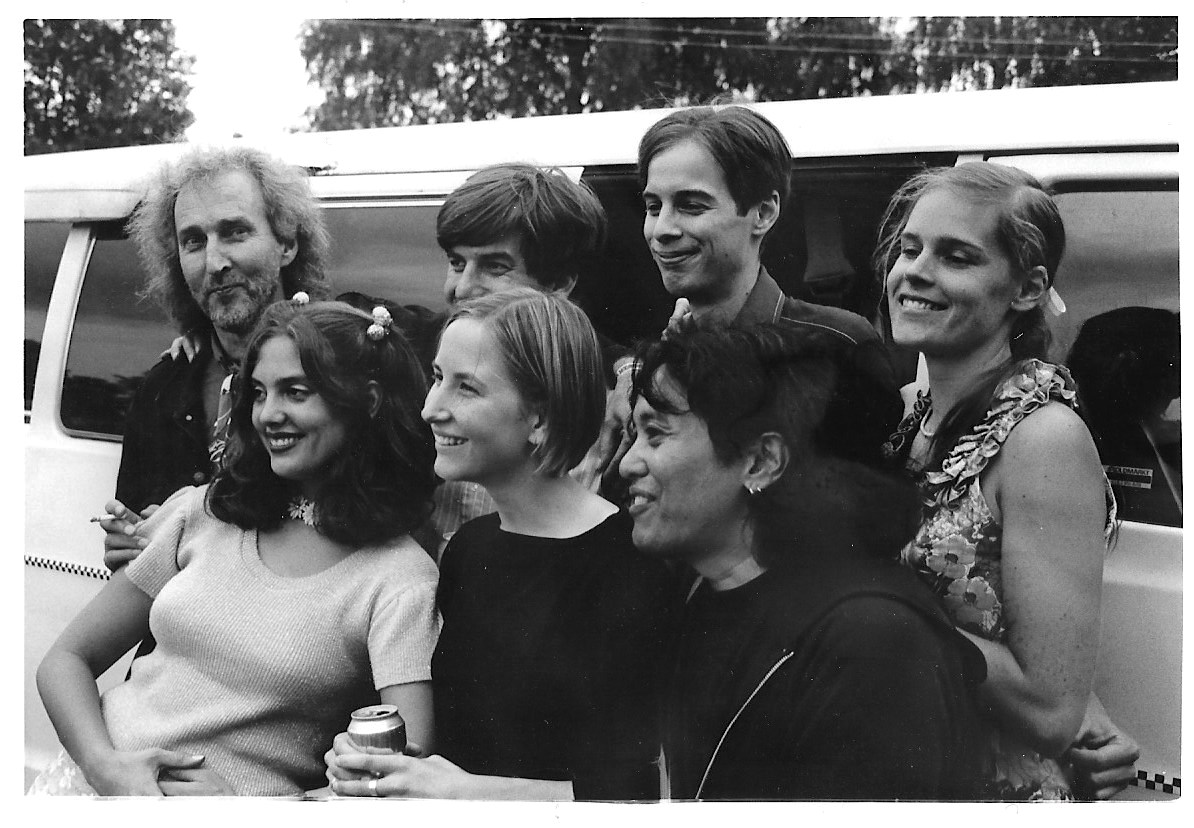
Hilarie: Tell us about some other memorable live experiences.
Jennifer: The first time we played Emmaboda in Sweden with the Lucksmiths was magical. The Olivia Tremor Control and Neutral Milk Hotel regaled us with tales about their experiences playing there. They even gave us a handwritten note containing advice about “breaking into” the Hotel Amigo pool and something about a “mystery drink.” Sure enough, one night in the woods, the pool was, um, populated. Immediately most Swedes naturally started skinnydipping and well, many but not all the Americans joined in. Also, the Ladybug Transistor performing with Mayo Thompson and Ghost at Spaceland in L.A.; seeing Lee Perry and Oasis (diva helicopter arrival) in Sweden; playing at our friends’ wedding at a biker bar in Flekkefjord, Norway; in 2019, staying at the Vibberodden Lighthouse during the Egersund Visefestival in Norway; getting to play live with Peter Buck and Scott McCaughey’s the No Ones, when we returned to Egersund in 2023. With the Garment District, opening for Julia Holter at the VIA New Music & Media Festival; opening for Parquet Courts; filming a Silver Studio Session for the Andy Warhol Museum; performing at the Carrie Furnaces Rivers of Steel National Historic Landmark (giant steel mill remnants along the Monongahela River); participating in artist Doug Aitken’s Station-to-Station video project; and performing in an abandoned 1900s-era Czech Church on the Allegheny River for the SYNC’D film and music series.
Hilarie: What is the best food you’ve ever eaten on tour?
Jennifer: Tacos, burritos and brunch in the Mission District in San Francisco. The vegan Uchepo Tamal at Public Records in Brooklyn during our recent Ladybug Transistor tour. The first time we tasted (devoured) Brunost, brown Norwegian cheese. Addicting. Hilarie might chuckle since it’s so common there! Breakfasts at the Grand Hotel in Egersund, Norway during the Visefestival, with the sublime simplicity of bread, yogurt and granola … everything leads back to Norway which is appropriate for this interview.
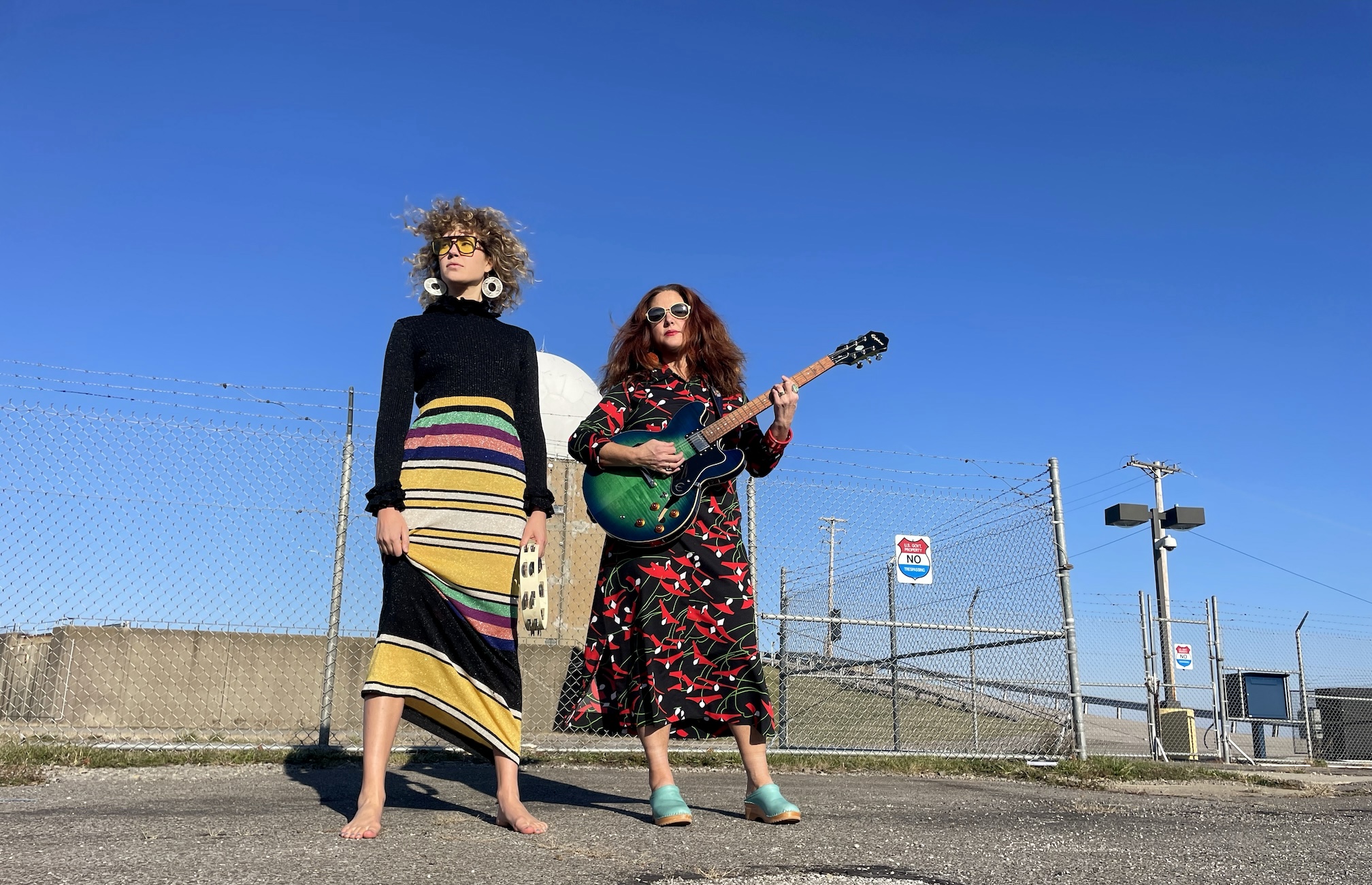
Hilarie: What’s in your fridge?
Jennifer: Vegan contents. Seltzer, hummus, leftovers, almond milk, garlic, ginger, pickles, carrots, tempeh, all manner of hot sauces, Fly By Jing Sichuan chili sauce, tahini, lots of fruit, Earth Balance.
Hilarie: What is the last thing you cooked at home?
Jennifer: Recently: Vegan chili and banana bread
Hilarie: What’s on your nightstand?
Jennifer: Electric Eden: Unearthing Britain’s Visionary Music by Rob Young; Jane by Maggie Nelson; The Modern Utopian by Richard Fairfield; Amity and Prosperity by Eliza Griswold; Dog Songs by Mary Oliver; the new issue of Maggot Brain.
Hilarie: What are some of your hobbies?
Jennifer: Observing the world around me through photography; sewing and crafting; swimming laps; gardening (work in progress!); adventures with our Black Lab Casper; thrift shopping; record shopping; museums; watching documentaries.
Hilarie: Do you collect anything?
Jennifer: I am a lifer when it comes to thrift shopping and hand-me-downs, and I prefer the organic discovery process of physically going out into the world to discover things, especially when visiting new places or having special pieces passed down from family members or shared between friends. Vintage dishware, housewares and design, paint by numbers, found ephemera, records.
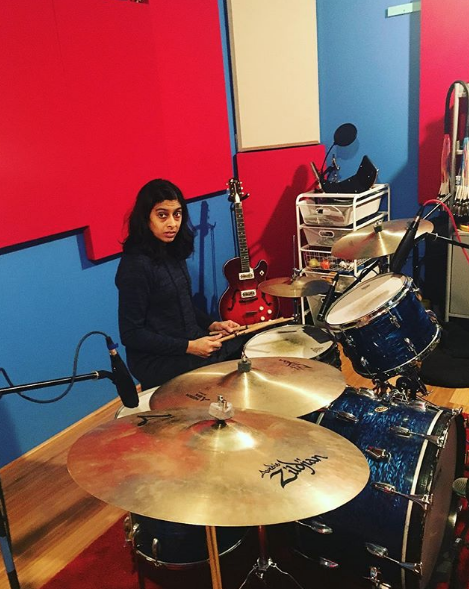
Hilarie: Do you have any favorite stagewear or stage design?
Jennifer: Vintage clothing and thrift scores from over the many years; something given to me by my Grammy Kay. I love finding gems from my friend’s fabulous new shop, Jackie Whoa Vintage and my other friend’s event, the Pittsburgh Vintage Mixer. On our recent Ladybug Transistor tour, we brought along our original handmade paintings from “The Albemarle Sound” as stage decor. In December, The Garment District performed as part of a SYNC’D Presents showcase, which featured a live liquid light show by SOS Lightshow from Dayton, Ohio, and it was so fantastic. Very comforting to be bathed in that kind of warm light, shape and texture. So much the opposite of the ubiquitous artificial LED lighting we see all around us now that I find to be so harsh. Last month we opened for William Tyler & The Impossible Truth and the show featured DIY visuals from Michi Tapes, including live projection manipulation, VHS/8mm videos and found footage, and I cannot wait to have them at our next show.
Hilarie: What musician would you love to interview?
Jennifer: Robert Wyatt.
What is your sign?
Jennifer: Leo
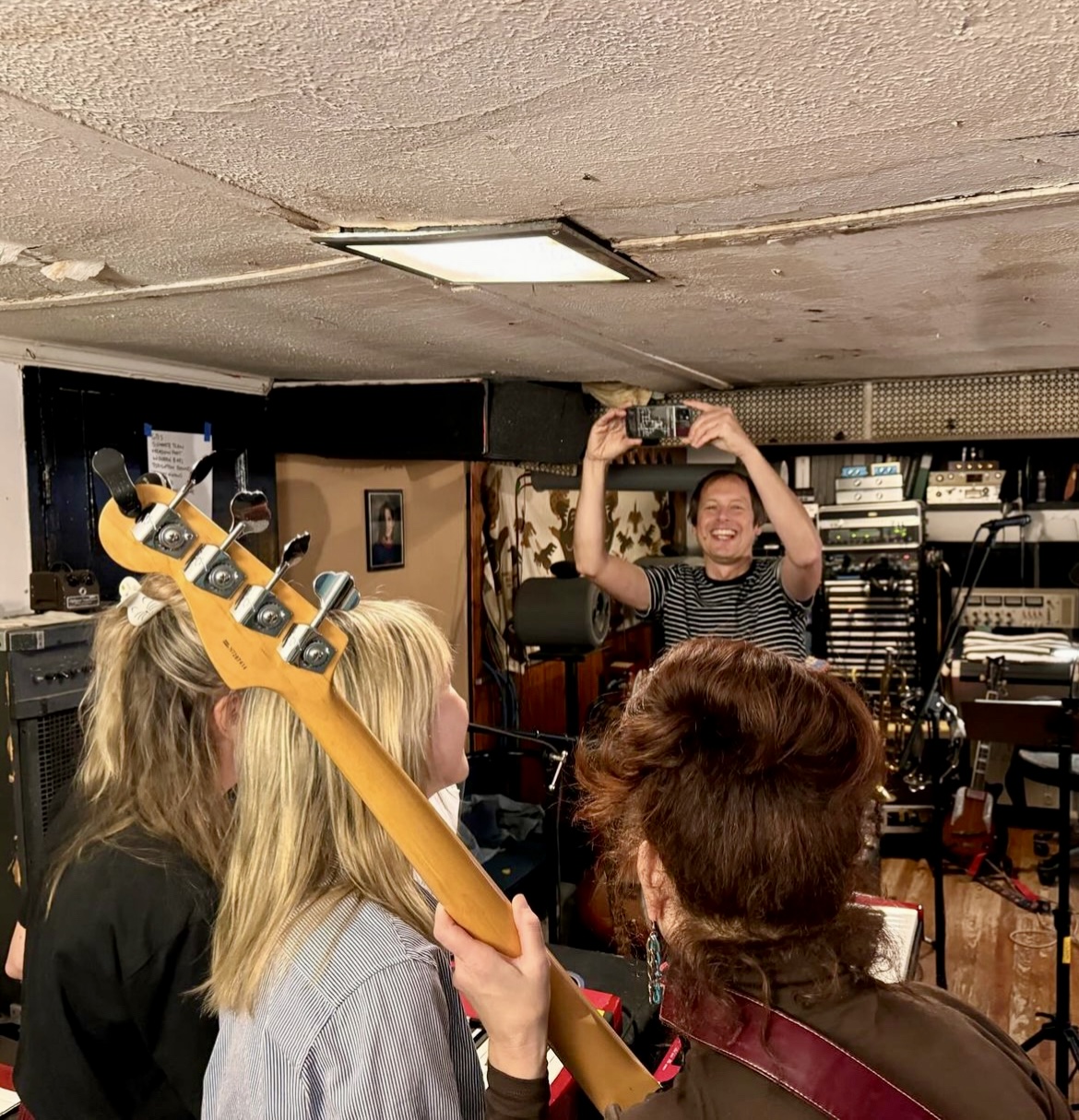
Hilarie: What musical collaborations have really impacted you?
Jennifer: With The Ladybug Transistor, we had the remarkable opportunity to work with Kevin Ayers. We recorded a cover of his song, “Puis-Je?” for the Pop Romantique: French Pop Classics compilation (Emperor Norton), and he added the vocals remotely from a studio in London. All organized initially via phone! The Garment District collaborated with artist Nicole Czapinski on the music video she made for “Left on Coast,’ which we filmed at an abandoned Nike Missile Site in Western Pennsylvania. Composing original music for the Pittsburgh-based SYNC’D series, which pairs musicians with filmmakers and video artists.
Spending time together in the studio and sharing a creative process with my cousin Lucy Blehar, who sings on the Garment District record. I’ve always been drawn to the concept of family bands (I play in The Ladybug Transistor with my brother Jeff) and what exists between relatives who collaborate on creative endeavors. We sing backups and harmonies and double certain melody lines together. It’s a very close bond, and an organic way of enjoying the studio environment together, extremely rewarding and such a blast. This continues my family’s music-making heritage, as my grandfather, great-aunt and great-uncles performed in tamburitza orchestra family bands in the Monongahela Valley towns Braddock and Rankin, and in Benwood, West Virginia, often for boarders who worked in area steel mills. Also, “Nature-Nurture,” from Melody Elder, was remixed by Sonic Boom (Spacemen 3, Spectrum). “Bird or Bat” features bass guitar by Jowe Head (Swell Maps, Television Personalities), who I recorded with years ago in Brooklyn when we were stuck inside at our house Marlborough Farms during an epic NYC blizzard (look for those to resurface soon!). Last year I DJed at the opening celebration of “The Velvet Underground & Nico: Scepter Studio Sessions” exhibition at The Andy Warhol Museum. What a dream.
Hilarie: Tell us about your latest album. How did it come together?
Jennifer: I’m ecstatic to have my brand-new full-length album, Flowers Telegraphed to All Parts of the World, out now on Happy Happy Birthday To Me Records after knowing Mike Turner through Athens, Georgia and Elephant 6 bands, for many years. It’s been wonderful to reconnect with Mike on a personal level too, and a deep honor to be label mates with bands I admire like the Primitives, the Wedding Present, Great Lakes, Fred Schneider, Outer World, Swansea Sound, Katie Lass, and many others. He is so supportive and thoughtful and I’m so grateful for that support and for his enthusiasm. When he said, “What color vinyl do you want to do?”, that was meaningful (orange, of course!), because there is nothing like the tactile and visceral experience of listening to an album on vinyl from start to finish over a space of time. And it was a dream come true to get to talk to Warren Defever (His Name Is Alive), who cut the lacquers for my new LP at Third Man in Detroit, and have his expertise at the pressing plant.
Before this new album, I put out an all solo, all instrumental album called Luminous Toxin, released on Bill Shute’s Kendra Steiner Editions label. I wanted to do something more in the realm of sound collage, found sounds and field recordings and ambient music. I love instrumental music, and I found myself with this body of material that fit together. It’s liberating to sometimes do it all myself, record at home, have all instrumental, interstitial, soundtracky type music that I’m drawn to for a cohesive release. I was able to do like some final mixing at my friend’s basement studio called Yellow Couch Studio. I also did a 45 that has a remix that Sonic Boom did of one of my songs. That was all long distance like you’ve done sending files back and forth. I rerecorded a few of the synth parts at the end, but I love that his remix is very respectful of the original. Pete Kember’s way of making physical space out of sound is how I describe it.
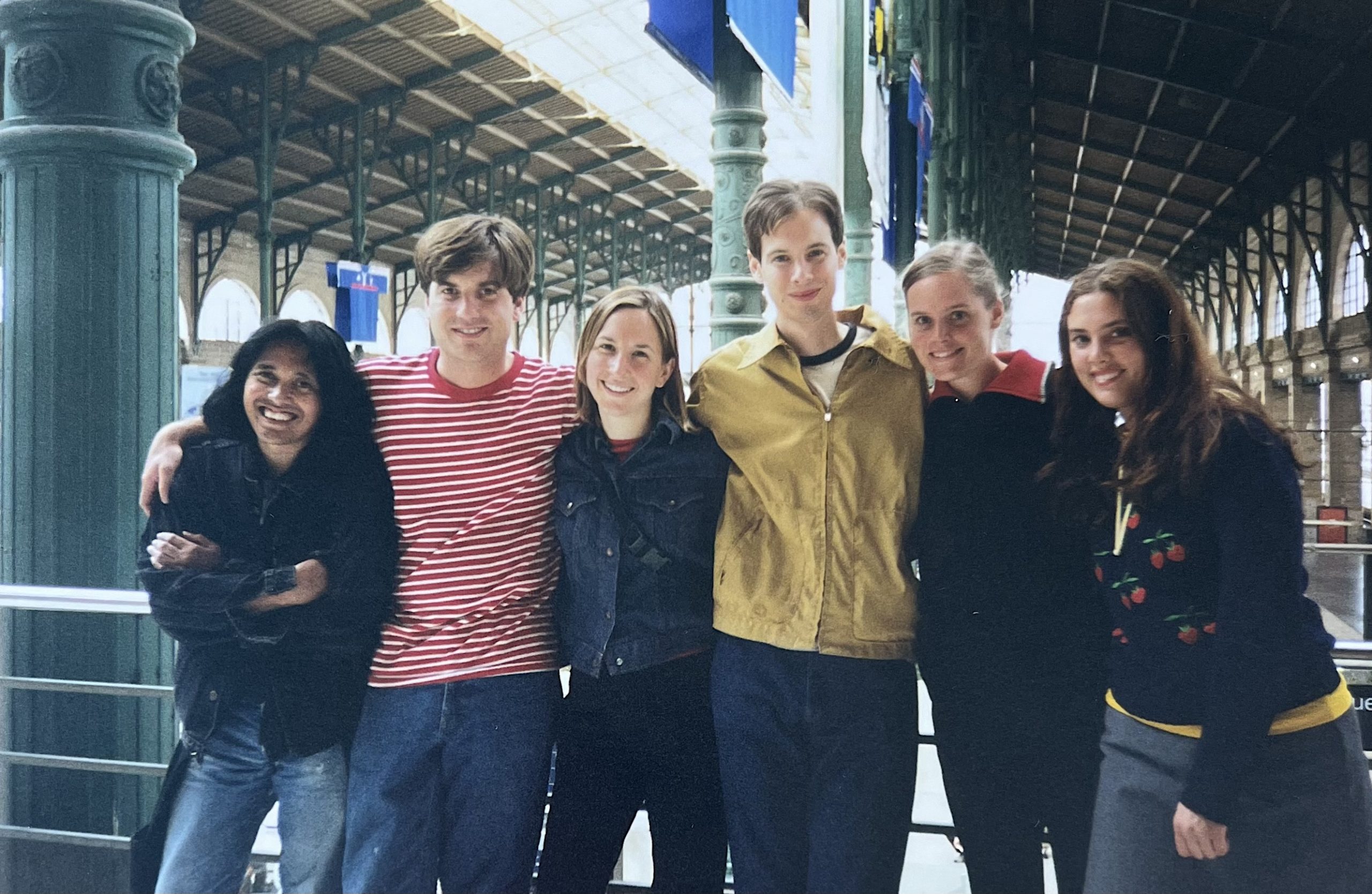
After that I started creating new demos at home that would become my new album and I started working with my friend David Klug at his studio in Mount Washington here in Pittsburgh. Dave’s studio is very close to where we live so it is convenient and flexible if I want to try something new, add more layers, redo a part. There is a comfort level there and it has been an empowering space for creativity and experimentation and where I have been able to challenge myself and grow musically. I already had a lot of the new songs almost fully ready as far as arrangements. But other times I was able to keep that process open and flexible because I was working in his home studio and it’s a laidback, comfortable setting to be in. I still have some other things started waiting for a future release. I used a lot of great vintage synthesizers, including my own: I have a Roland JX3P I love. The Vox Super Continental and also my Wurlitzer electric piano I’ve had for years. And then for certain songs like “Left on Coast” and “Following Me,” I was really going for a specific fuzz guitar sound that you can’t get from some of the digital plug-ins … I mean, there are so many amazing people are making cool pedals now, including our friend Åke Strömer in Brooklyn. I got to borrow a bunch of ’60s and ’70s guitar pedals from Gregg Kostelich of the Cynics, they’re a fantastic garage rock band from Pittsburgh. And again, he was generous with them, basically he gave me this box of his vintage pedals, really rare ones. He was like you can borrow them for like a year. I love vintage pedals that have like 1 button or one knob.
Hilarie: That’s the best. I’m not super hung up about stuff, but I just want two buttons.
Jennifer: All the digital displays and things that are programmed, I’m not oriented that way either. It’s like how can this equipment be in service to the song? It can’t make you have a great song. It can’t make you have the final piece of music. But it can bring things out and highlight things and it’s part of the language of whatever that song is. I felt so lucky to be able to have these great vintage and analog instruments because that’s part of my sound, to be able to see them and feel them and touch them, it’s very visceral. During the pandemic, there were obstacles and interruptions. I could do the mixing in person but we also did zoom, we did online. Lots of back and forth because being very involved in that process from the very beginning, from writing the demos, arranging everything through the mixing and the mastering, I was constantly there.
I’ve always been fascinated by bands made up of siblings or family members or couples and being in The Ladybug Transistor with my brother and two couples. Working with Lucy is so organic because she’s my first cousin. We’re really close and we love being in the studio together and just being around each other, so it was just an added layer to our personal bonding to be able to share that. I’m not a singer, but I sing a lot of backups, and I can do it with her because we’re related. And there’s something about voices that are related that like merge and overlap, where they kind of come together in that way. It’s also just a positive environment. The story of the new album includes this incredible group of friends, who all contributed their talents, several of whom perform live as part of The Garment District. You know Shivika (Asthana) from Papas Fritas.
Hilarie: I was going to ask you about her because I always admired her so much. We played a lot with Papas Fritas.
Jennifer: I kind of get goosebumps. We reconnected after she moved here with her family from Charleston. Coincidentally, she had applied to Handmade Arcade, the event I was running. This is how we became reunited. I’m in love with her drumming. She has an amazing feel.
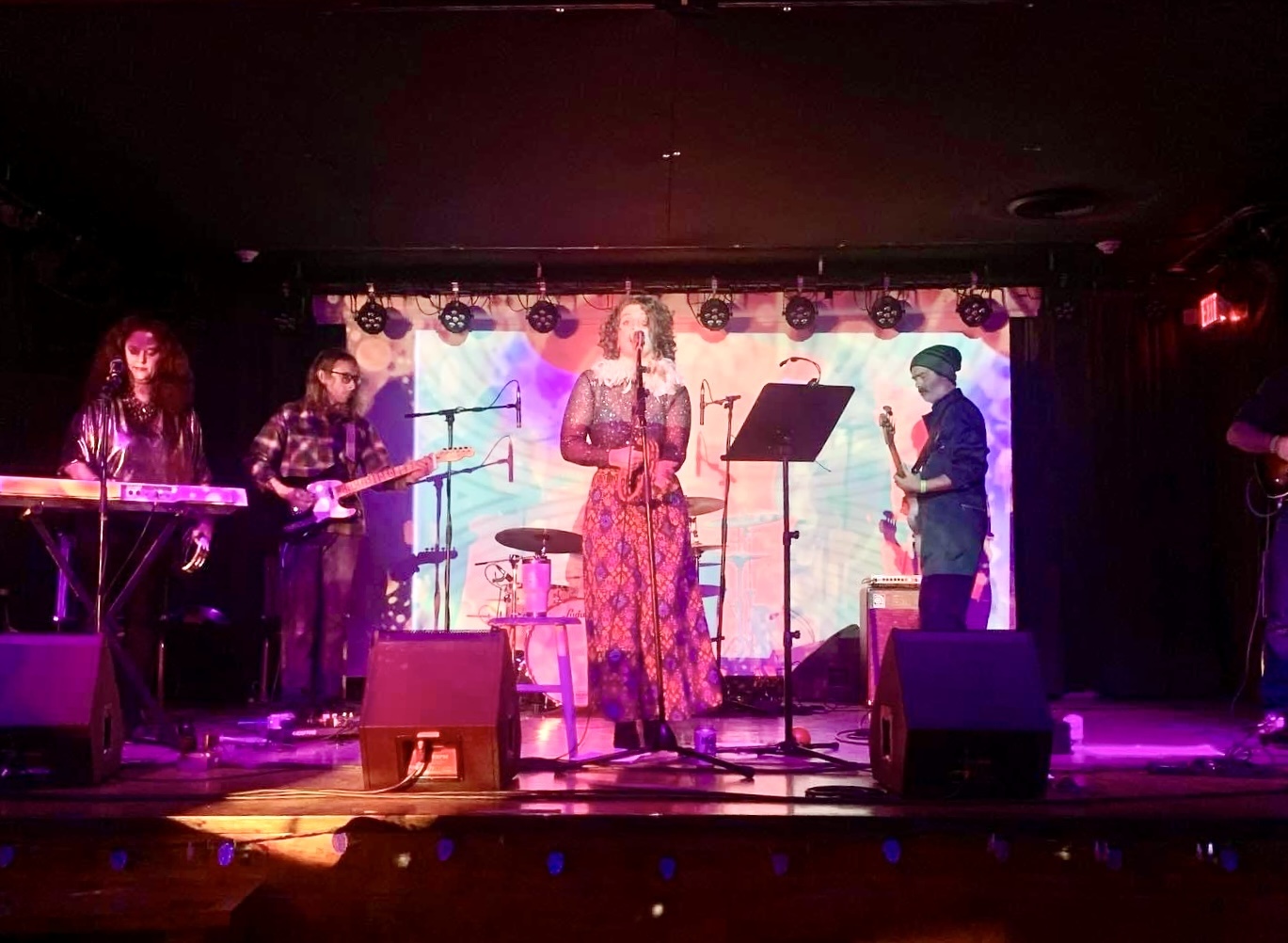
Hilarie: And a pretty voice too.
Jennifer: She has a great voice, and we have played shows together. She has two kids, is really busy, makes her own jewelry and has a full-time job. I love that she’s on the new album. She should be playing music all the time. She’s got this natural touch. Sean Finn is the other drummer who plays on the new album and live with me, and he’s also incredible. Then Dave, who recorded the new album, plays on “Seldom Seen Arch” and he’s also an amazing drummer. He’s mainly been in metal bands, but if you tell him what you’re going for, he’s like a metronome with a cool feel. With arranging and producing the music and thinking about who’s the best person to play on a particular song, which are the best instruments to use, and the flow of things, I feel so fortunate to work in Dave’s studio and with friends and relatives on the album.
Hilarie: What are some of your favorite instruments and gear you used on the latest album?
Jennifer: Two beloved instruments I always use that have been with me during my entire music-making journey are my Fender Vibrolux Reverb amp (beloved amp I got years ago from a friend I worked with at The Brooklyn Museum before there were things called eBay and Reverb.com!)—and my Rickenbacker 360 Fireglo, a generous gift from my parents years ago. Right now I am in love with a 1970 dark red Guild Polara electric guitar that a dear friend of mine is generously sharing with me. I got to use it on the Ladybug tour in November and I cannot wait to get to know it better and use it on new recordings! I am inspired by analog instruments and the characteristics of their physicality, and I love having them around the house to encourage the writing and demo process to be spontaneous in terms of where an instrument might lead you. Not in the sense of viewing equipment and gear as precious but as elements that are part of a song or piece of music to inform the creative process. Some of my favorite instruments that help give the new Garment District album its sound include our 1960s Vox Super Continental organ, Wurlitzer electric piano, Korg CX-3 organ, 1980s Casios.
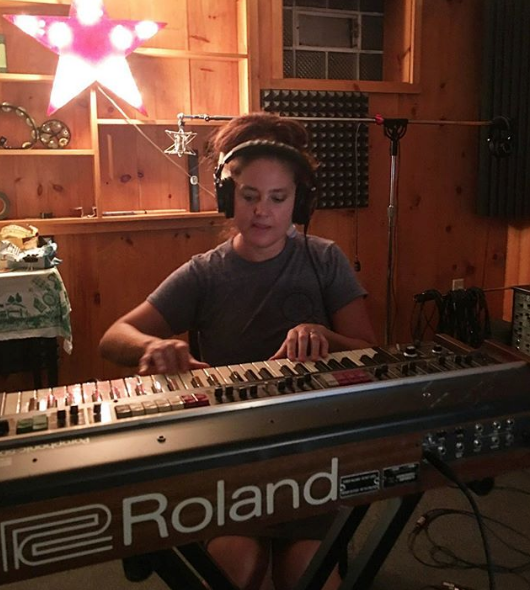
For the new album, I am so fortunate that I could borrow several synthesizers I consider to be the holy grail in terms of the golden age of the analog synth universe: a 1970s Roland 505 Paraphonic, Roland System 100, Farfisa Syntorchestra and a Sequential Pro One—along with effects like a Roland Dimension D. In terms of achieving specific guitar sounds, I loved experimenting with a few 1960s and early 1970s fuzz pedals I borrowed from my friend Gregg Kostelich (of the iconic Pittsburgh garage band the Cynics and Get Hip Records), including a UMI Buzz Tone & Volume Expander and Foxx Fuzz & Wa & Volume, plus my own Fuzz Face.
I love the story behind one of the drum kits we used for a few of the new songs—a beautiful-sounding 1966 Slingerland kit belonging to Laura Rogers (The Rogers Sisters). Our first bands played shows together in NYC (Ruby Falls and Saturnine) in the 1990s. Though its provenance has not been confirmed, Laura was told that the kit, which she bought from a collector in Detroit, was used on the Nirvana Unplugged recordings. Woven into this story is the fact that the brilliant Shivika played Laura’s kit on “The Starfish Song” and “The Instrument That Plays Itself.” I love the intuitive feel of Shiv’s playing, sometimes slightly behind the beat, perfect for the groove needed. She has performed live with us a few times and I think those two songs highlight her style. Papas Fritas and the Ladybug Transistor also used to play shows together, including at the Knitting Factory in NYC. Not long ago, we reconnected here in Pittsburgh (through another mutual friend!) and it has been such a joy to reconnect through both music and crafting. It was incredibly special having my longtime friend and Ladybug mate Gary Olson on trumpet along with and Kyle Forester on saxophone. And having Nathan Musser, who I hope to work with again, on violin and cello. I also really enjoyed playing melodica and glockenspiel on the album as well. These seemingly minor details are the kinds of experiences I love about the recording process and making a permanent document in sound. They help tell the story of an album and I love that our lives have intersected in these ways.

Hilarie: When we come to Pittsburgh, what should we do?
Jennifer: I’d love to take you to the Mattress Factory museum, where I used to work. You could see permanent installations by Yayoi Kusama, Greer Lankton, James Turrell, Ann Hamilton, so many remarkable artists. Also the Andy Warhol Museum of course, and the Teenie Harris photography collection at Carnegie Museum of Art. Andy Warhol’s grave is right near where we grew up—people love to leave gifts at the site. We would walk through the Troy Hill Art Houses, which are installations in row houses that have been transformed as public art. The best vegan food ever is at Apteka (plant-based Eastern European), where we would go to eat and drink often. Las Palmas for street tacos and Udipi for Indian food. We would visit the birthplaces of August Wilson and Gertrude Stein and ride the incline up to Mount Washington (very Scandinavian!). We have good vintage shopping and some of the best record stores in the country. We’d go to Jerrys, the Attic and the Government Center. And nature is a huge part of Western Pennsylvania. When people come to Pittsburgh, they are shocked by how green it is. You can go hiking within 10 or 15 minutes in the city for the Rails to Trails program. The Gap Trail goes all the way to D.C. and there are so many great state parks all across Pennsylvania and rivers and streams.
Hilarie: You’ve made me homesick. Now I want to go to record stores and eat good food and I’m here in the middle of nowhere.
Jennifer: You have the astounding nature and the Pagan culture and the fascinating traditions that go way, way back, plus a society that actually cares about taking care of people. Pittsburgh has a history of innovation and resilience. There’s still a lot of issues here, a lot of struggles and challenges, like with every city, especially with affordable housing. It’s a crisis all across the U.S.
Hilarie: What are you watching these days?
Jennifer: We’re pretty addicted to documentaries. 1970s British television and horror films. Night Gallery. I love the soundtracks to them too. Always revisiting I’m Alan Partridge. One of my favorite new shows is Beef.
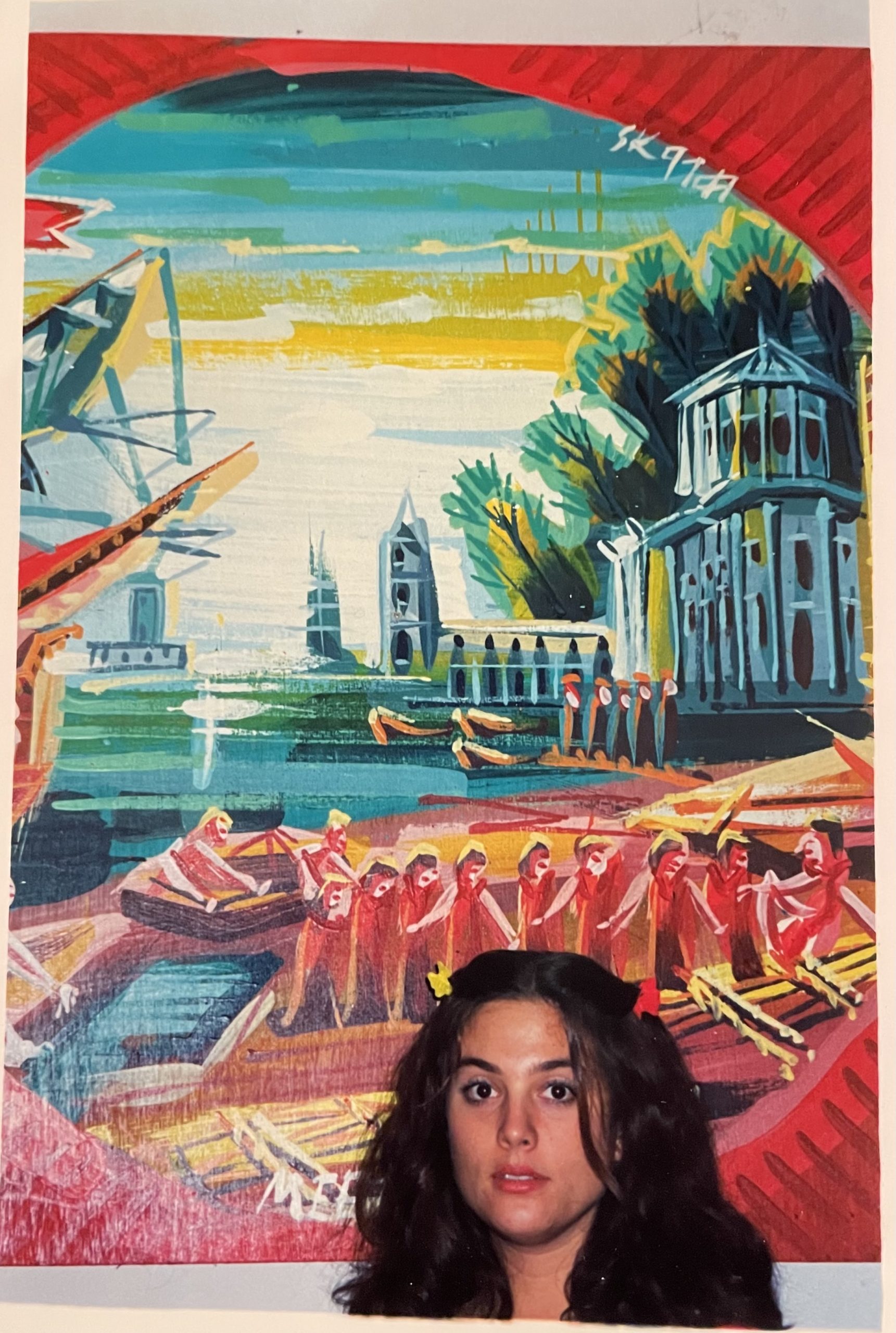
Hilarie: What newish and current music you are loving?
Jennifer: New and slightly newish music that’s often on my turntable and in my ears: Surface to Air Missive, Carl Didur, Zacht Automaat, The Frowning Clouds, Traffik Island, ORB, Locate S,1, Gloria, Etran de L’Air, Paint, Large Plants, Emma Anderson, Heather Trost, flypaper, Colored Lights, Cindy Lee, Brigid Dawson & The Mothers Network, The Murlocs, Cindy, Jacco Gardner, Tim Presley, The Cromagnon Band, Licorice Root Orchestra, Bong Wish, The Orange Alabaster Mushroom, Cut Worms, Hot Apple Band, Gorky’s Zygotic Mynci, Liam Hayes, Belbury Poly, Samantha Glass, Jackie McDowell, Golden Apples, The David Tattersall Group, Mike Donovan, Flash Hits, False Tracks …
Hilarie: What are you looking forward to this year?
Jennifer: Performing live more and celebrating the new LP and hope to tour. DJing at the grand opening of The Government Center Outpost record shop in my neighborhood on March 9. We are organizing a show on April 19 with our friends in Pittsburgh, Chariot Fade, DJ BusCrates and Jackson Scott, plus live visuals by Michi Tapes. On April 28, I am so excited to participate in the Maxo Vanka Community Block Party. I will be playing 78s from my grandparents’ collection of tamburitza music surrounded by the magnificent murals of Croatian artist Maxo Vanka at St. Nicholas Croatian Catholic Church in Millvale, Pennsylvania. Vanka painted the murals in 1937 and 1941 and his subject matter explores a combination of religious imagery and iconography and progressive social themes including the horrors of war, injustice and the exploitation of workers. I have some new demos started and hope to be back in the studio soon! Working on new music videos in collaboration with several artists (Johnny Arlett, Sandy Loaf, Michi Tapes, Peter Speer, Cosmo Graff).
Records Jennifer cannot live without
John Cale, Paris 1919
Mayo Thompson, Corky’s Debt to His Father
New Order, Power Corruption & Lies
Donovan, A Gift From a Flower to a Garden
Kaleidoscope, Tangerine Dream
Kevin Ayers, Joy of a Toy
Soft Machine, The Soft Machine
Love, Forever Changes
Lee Hazlewood, Cowboy in Sweden
Alice Coltrane, Journey in Satchidananda
King Tubby Meets the Rockers Uptown
Hans-Joachim Roedelius, Jardin Au Fou
Brian Eno, Here Come the Warm Jets
Ethiopiques, Vol. 3-4: Golden Years of Modern Ethiopian Music
Listen to the Garment District
Listen to the Ladybug Transistor
Read part one: Jennifer interviews Hilarie
Read our interview with Gary Olson
Preorder the new benefit cassette for Justice Democrats
